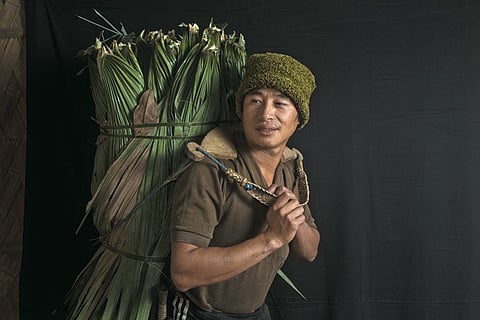
- Destinations
- Experiences
- Stay
- What's new
- Editor’s Picks
- Responsible Tourism
- CampaignsCampaigns
- Subscribe

The sun rises early here, and dusk falls before five in the evening. Darkness shrouds the mountains soon after and electricity suddenly seems a luxury. We had left the cell phone networks far behind. Except for a tiny wireless set at the Deban forest office, which crackled once every hour to transmit uneventful exchanges between the forest conservator&rsquos office in Miao and our rest house, we had dropped off the radar.
The Namdapha National Park and Tiger Reserve in Changlang district of Arunachal Pradesh is one of the largest national parks (2,052 sq. km) in India. (See the photos here Namdapha It's a beautiful world) It is part of a 20,000 sq. km contiguous forest stretching from Arunachal into the Hukawng valley in northern Myanmar. Listed among the world&rsquos 12 biodiversity mega-spots, it&rsquos known for its dramatic landscapes, diverse flora and fauna, and also (arguably) as the world&rsquos only protected habitat for four big cat species the tiger, the leopard, the clouded leopard and the snow leopard.
We planned to trek a hundred-odd kilometres over its arduous terrain, stopping at some of the Lisu settlements inside the park, to eventually reach Shidi Kha (Gandhigram) and Vijaynagar on the eastern fringes of the park by the Indo- Myanmar border. We hoped to witness life undefiled (as yet) by modern civilisation. As fine an idea as it sounded, accomplish­ing it was quite another matter.
The team geared up very early in the morning. After walking a mile on the Miao-Vijaynagar (MV) Road, we slipped downhill on the left side to arrive at a sandy beach with the Noa Dihing river gently gushing past us. David Yobin, our Lisu porter, said we&rsquod be trekking a &lsquomonkey trail&rsquo over five-seven days to reach Gandhigram. MV Road, which cuts through the park&rsquos periphery, is in eternal peril because the authorities aren&rsquot allowed to construct metalled roads inside a National Park, and each monsoon the gravel road turns into a massive pile of slush with big potholes, making it impos­sible for vehicles to ply, and in case they do, they have to head straight to the garage on their return to Miao, making the com­mute expensive. So locals have to negotiate through the forest. This takes their trained legs three-five days to reach Miao, the near­est town, to stock up on provisions, before the monsoon hits the region in March. The river swells up in the rain and the bridges, otherwise made and maintained by the Lisus, get swept away. The jungle tracks become impenetrable.
After eight hours of trekking, a swollen ankle, and two emerging blisters on each foot, we covered some 43 km. That night, we camped by the riverside, lit a bonfire, pitched our tents and slept under the starlit sky. By the next afternoon, we had made it to Nwzakhaw, the first village, and we had our lunch with their chief. We would have lost track of the days of the week but for the Sunday mass at church.
The Lisus are a Tibeto-Burmese tribe from Yunnan province in China. They mi­grated first to Burma and later to Arunachal. When the area was finally notified as a national park in 1983, over 2,000 Lisus liv­ing inside the park were never consulted. Without access to electricity, healthcare, roads and education for their children, or even a Scheduled Tribe status, they live a modest life.
During the evenings, David told us folk tales. He showed us plants that could be eaten and, more importantly, the ones that shouldn&rsquot. A few days later, when we reached Nibudi, David&rsquos village, we were greeted by their 90-year-old tribal chief, Liaso Yobin. He shared not only a couple of stories from his sack of folk tales, but also showed us old spoons made of melted aluminum scraps torn out of the wreckages of WWII aeroplanes.
Every day, villagers came down to spend time with us. Most spoke in the Lisu lan­guage and David patiently translated for us. We joined the villagers in volleyball matches late in the afternoons, swam with the chil­dren, and idled our time chasing pigs, dogs, hens and ducks. Often, I dipped my feet into the freezing river and watched its bends, crests and troughs.
The Lisus are largely self-reliant. They work as porters, sew their clothes, grow their produce, build their houses, generate a little solar electricity and, in the absence of schools, teach their children themselves. The forest provides for most of all this. Find­ing happiness was always meant to be this simple, but we perceive otherwise. The gods must be crazy&hellipor is it just us
